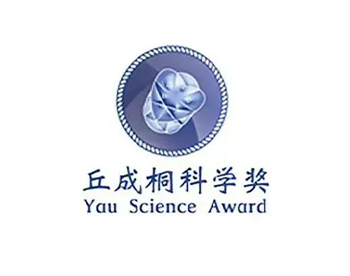2025–2026 Singapore Science & Engineering Fair (SSEF) — The Complete Guide
- Revealing SSEF
Often dubbed the “World Cup” of youth science competitions, the Regeneron International Science & Engineering Fair (ISEF) draws participants from over 180 countries and regions — around 3 million competitors vying annually for roughly 1,200 places in the finals. For middle-school and junior college students studying in Singapore, the key stepping-stone to this world-class platform is the Singapore Science & Engineering Fair (SSEF). Organised jointly by the Ministry of Education (Singapore), the Agency for Science, Technology and Research (A*STAR) and the Science Centre Singapore, SSEF is widely referred to in Singapore as the “Olympics of science contests” for secondary-school students. SCS+1
As an official affiliate fair of ISEF, the core value of SSEF is not just to display research results but to grant top achievers the qualification to represent Singapore at the ISEF global finals. With the 2025-2026 season timetable now published, mastering the time-line and rule-details is the first step for any student aspiring to advance. - 2025-2026 Season Key Information: Registration Eligibility & Timeline
Who can participate? Qualifications and rules explained
SSEF opens its doors to all middle-school and pre-university students studying in Singapore-based schools (excluding international schools), regardless of nationality. But two core rules must be noted: First, each student may submit only one project; team projects may include up to three members, and submitting multiple projects will result in automatic disqualification. Second, only those top-winners who are Singapore citizens or Permanent Residents are eligible to represent Singapore at ISEF.
These rules may seem basic but they directly affect eligibility. Previous years saw teams invalidated because they added members at the last minute, and overseas students lost chances because they overlooked the citizenship/residency requirement. Understanding the rules thoroughly is essential to avoid wasted effort.
Critical timeline: Missing a deadline means waiting a year
For the 2025-2026 season of SSEF, the timeline has been officially announced, and each step’s deadline is non-negotiable:
- Registration & project submission: 18 Nov 2024 to 15 Jan 2025 — all core materials must be uploaded during this window
- Teacher/Coordinator submission: by 17 Jan 2025 — the school-level final check
- Preliminary review: mid-Jan to early Feb 2025 — expert review of materials
- Shortlist announcement: 7 – 12 Feb 2025 — finalists revealed
- Finalist briefing: 12 Feb 2025 — instructions for presentation & defence
- On-site booth setup & safety check: 10 Mar 2025 — exhibition stand and compliance check
- Final jury interview/display: 11 Mar 2025 — face-to-face judging
- Results announcement & public exhibition: 12 Mar 2025 — awards revealed and public viewing
Note that Singapore operates in UTC+8 timezone; all deadlines are local Singapore time. It is highly recommended to submit well ahead of time to avoid network or upload issues.
- Registration Process in Detail: From Registration to Material Submission
Three steps to complete registration: registration → submission → school review.
Registration: For team projects only one member (the leader) needs to submit via the official channel, filling in project category, team member info, supervising teacher (if any) and other basic data.
Material Submission: The core documents include:
- Project abstract (a concise summary of objective, method and conclusion)
- Full research report (detailed background, methodology, data and conclusion)
- Research plan (explanation of design and implementation path)
All documents must follow the official template and be flawlessly formatted—format errors can affect eligibility.
School Review: The registration form and ISEF-special forms must be submitted through the school’s SSEF coordinator, who will compile and pass them to the organising body. This step has a deadline two days later than student submission, so allow sufficient time for school review.
Avoid common pitfalls when preparing materials:
Based on past years’ review feedback, three major problem areas consistently occur: (1) the abstract must stay within word-limit and include the research contribution and scientific method; (2) the full report must include original data logs and ethical-approval documents if human or animal subjects are involved; (3) for team projects each member must clearly state their individual contributions—“name only” members risk disqualification.
Additionally, ISEF-required special forms must not be ignored — for instance, Form 1C for regulated-agent projects, Form 7 for continuation projects. These forms can be downloaded from the SSEF website; when completing them, ensure data aligns exactly with what is in your research report.
- In-Depth Review of Judging Criteria: What Really Scores Points?
SSEF’s judging criteria align fully with those of ISEF. Although criteria differ slightly for science vs engineering categories, five major dimensions guide evaluation and the scoring weight influences preparation focus.
Science-category projects: Data-handling and logic are core.
The scoring breakdown is: Presentation (35 pts), Creativity (20 pts), Execution & Analysis (20 pts), Design & Method (15 pts), Research Topic (10 pts).
That means the topic must clearly target a scientific problem, show relevance and be scientifically verifiable — for example a 2024 award-winning project on “novel ionic liquids for carbon capture” did just that. Execution & analysis require data collection that is systematic and reproducible; for example the project above used AI simulation and reported a 34% reduction in energy consumption. The presentation component includes a poster display (10 pts) and an interview (25 pts). Posters must be logically organised and clearly labelled; during interviews students must explain limitations and their own independent contribution. In team projects every member must understand core results.
Engineering-category projects: Utility and innovation are equally emphasised.
Points are allocated: Design & Method (15 pts), Execution & Testing (20 pts), plus the other dimensions similar to science. For engineering projects the research topic must clearly specify a practical problem, solution criteria and constraints — one 2024 winner in environmental engineering defined “low-cost purification of non-potable water.” Design & method should show comparison of multiple proposals; prototype development must be complete. Execution & testing require the prototype to be validated under multiple conditions and show engineering skill — for instance one winning transistor-optimisation project ran 50+ doping experiments and documented conductive improvement rigorously. Across all categories creativity is key: judges particularly look for “new perspectives” or “solutions to classic problems,” and interdisciplinary studies (bio + computing, materials + environment) have seen rising success. - High-Efficiency Preparation Strategy: From Topic to Defence
Topic selection: Catch the trend + leverage your strengths
Choice of topic largely determines the project quality. Based on recent winners, three trend directions stand out: global-hot issues (environmental remediation, biomedical engineering, materials science), interdisciplinary research (e.g. bio-chemistry + data science or environmental engineering + materials), and leveraging your own strengths (if your school lab is well-equipped choose experimental projects; if you're better at data-analytics choose a big-dataset study). For example, in 2024 environmental-related projects comprised 32% of winning entries and many incorporated AI or big-data. Before finalising your topic, examine SSEF past winners (last three years), avoid duplication, and consult your teacher or an A*STAR researcher for guidance.
Research execution: Manage the timeline + maintain rigorous records
From topic selection to submission takes about 6–8 months; good time-management is essential.
- Early phase (1–2 months): complete literature review and design, check whether ethical approval is needed (animal/human studies often need 1+ month).
- Mid phase (3–4 months): execute experiments or collect data; record all steps (including failed ones) since judges may audit logs. For team projects meet weekly to sync progress and avoid uneven contributions.
- Late phase (1–2 months): perform data analysis and write the report; allow 1 full month for revisions — ask a specialist to check logic or formatting.
Defence preparation: Combine poster design + mock interview
Final defence is a make-or-break stage. - Poster design: Follow ISEF standard (48″ × 48″ tri-fold board). Organise content: Problem → Method → Results → Conclusion. Graphs and tables must cite sources; avoid dense text. Print a draft for a 3 m-away legibility check.
- Interview simulation: Prepare three types of questions—basic principle (“Why choose this method?”), result analysis (“What caused the data fluctuations?”), future work (“How would you optimise this next?”). For teams simulate role-sharing to avoid overlapping or missing responses.
Compliance check: Avoid a single-point disqualification
Some mistakes lead to immediate disqualification: project completed more than 2 years ago; report disclosing teacher or school names (some categories forbid); use of hazardous chemicals or biological samples without approval; team size over three or submitting multiple projects. Submit only after ticking off the official SSEF checklist; your school coordinator usually offers compliance guidance.
- FAQ: Clearing Preparation Roadblocks
Q: Can international students participate?
A: Yes, they can participate in SSEF and win awards, but only Singapore citizens or Permanent Residents are eligible to represent Singapore at the ISEF finals.
Q: Must the project be experimental?
A: No. Engineering prototypes, data-analysis studies, and social-science investigations within STEM contexts are acceptable, so long as they meet scientific and innovation requirements.
Q: Can I submit photos of a poster board as visual materials?
A: No. Photos of posters or physical boards are not permitted. Only charts, data visuals, or diagrams are acceptable.
Q: If I fail the preliminary review, can I appeal?
A: No. SSEF preliminary review decisions are final. However you can learn from feedback and aim for the next season; many teams improved methods and won the following year.
For Singaporean middle and junior college students, SSEF is not only a gateway to ISEF but also a powerful mark of research ability in university applications. For example, in 2024 among SSEF Gold-Award winners, 85% progressed to universities ranked in the QS Top 50.





